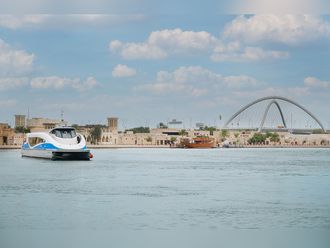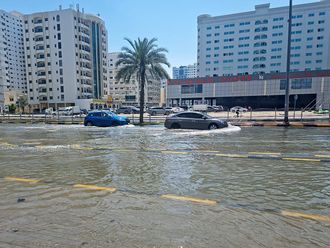
Dubai: The Dubai Corporation for Ambulance Services (DCAS) is gaining ground in its target to cut down its ambulance emergency response time from the current average of eight minutes to within four minutes by 2020, senior ambulance officials said.
“We [DCAS] have now reached a certain percentage near the target, but I don’t want to disclose the exact number now. We will reveal it in the conference [next year]. The vision and target for 2020 is four minutes and below. We have strategic plans in place for that,” Dr Omar Al Sakaf, Medical and Technical Affairs Department at DCAS, told Gulf News on the sidelines of the announcement of the first Dubai International Ambulance Conference that will be held next March.
“His Highness Shaikh Mohammad Bin Rashid Al Maktoum, Vice-President and Prime Minister of the UAE and Ruler of Dubai, has directed it, so it has to be done. Whatever it takes, we will do it,” he added.
Ambulance emergency response time is the time it takes for a first responder to reach a patient. In potentially life-threatening emergency cases such as a heart attack or a massive trauma, every second counts to save a life. Arriving on the scene within eight minutes most of the time is the gold standard in the industry.
In 2014, DCAS received and responded to 145,332 calls across Dubai. Emergency cases classified as code red or cases of patients in a life or death situation, such as trauma victims, people having a heart attack or a stroke, were recorded at 4,449.
Some 15 per cent or 21,096 cases fell under code yellow or those who needed significant intervention but who could wait a few hours for help to arrive.
The remaining 92,422 were classified as code green or patients who needed medical treatment but assistance could be safely delayed.
Dr Al Sakaf said in order to achieve the four-minute target within five years, they are enhancing their strategy by properly mapping and distributing their staff and ambulances according to the need.
“We are changing our concept [in emergency response]. By hiring and adding staff, we are not solving the problem. But by changing the strategy by deploying staff in the community, having new ambulance spots, you can do a lot of things with that,” Dr Al Sakaf said.
Dr Al Sakaf said the strategy involves expanding the reach of ambulance stations and spots for potential emergency areas, and involving community emergency staff. They also have 20 ambulance services depending on the situation — ambulance buses for crisis situations, motorcycles and bicycles for busy areas, first responders, mama, heavyweight, and neonatal ambulances, among others.
Last year, DCAS acquired what is dubbed as the world’s fastest ambulance, a Lotus Evora that can go up to 300km/h and can reduce response time to three to four minutes.
Working hand-in-hand with the ambulance services, Rashid Hospital’s Trauma Centre is also introducing ways to enhance its emergency services.
Dr Victor Butros, Head of the Department of the Trauma Centre, said in order to improve pre-hospital services, emergency doctors were assigned in ambulances and in the control room to give medical advice for the past eight months as a trial. He said the plan is to make this a main fixture in the services as it is beneficial to the community.
“Patients are more stabilised, especially in stroke cases and MI [myocardial infarction or heart attack] with this trial run,” Dr Butros told Gulf News.
For this year alone until Tuesday, the number of patients treated in the emergency room of Rashid Hospital has reached 86,000. In 2014, the centre received 166,000 patients, in 2013, 158,000 patients, and 186,000 patients in 2012.
Most of the cases are trauma and surgical cases such as industrial and car accidents, while the remaining 40 per cent are medical cases such as heart attacks, strokes, abdominal pain and surgical cases.












